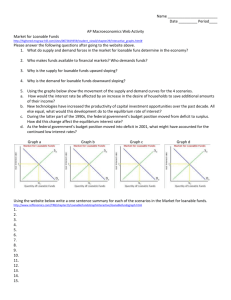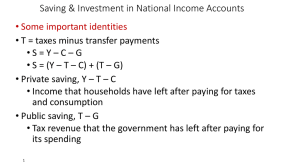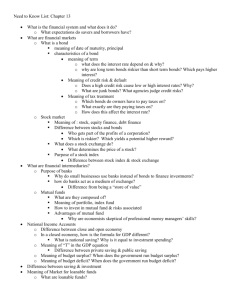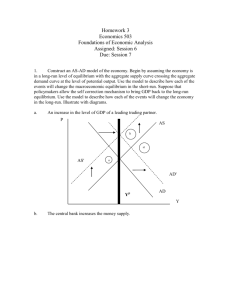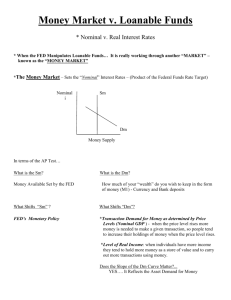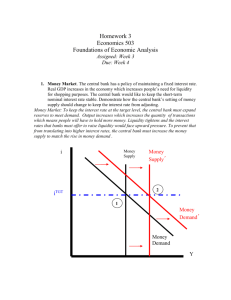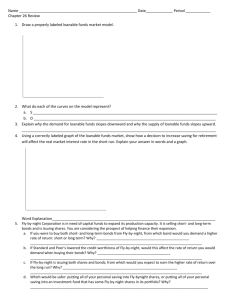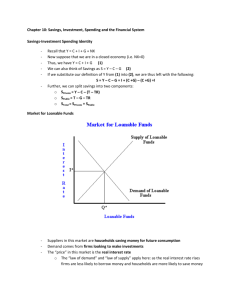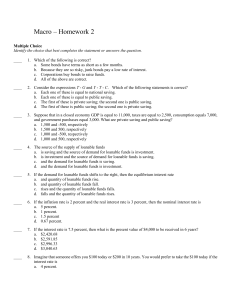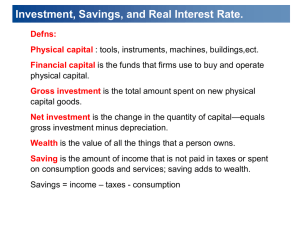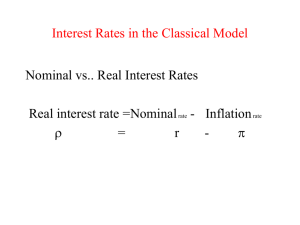ECON 2105 Rajaram Test # 2 Friday February 29
advertisement
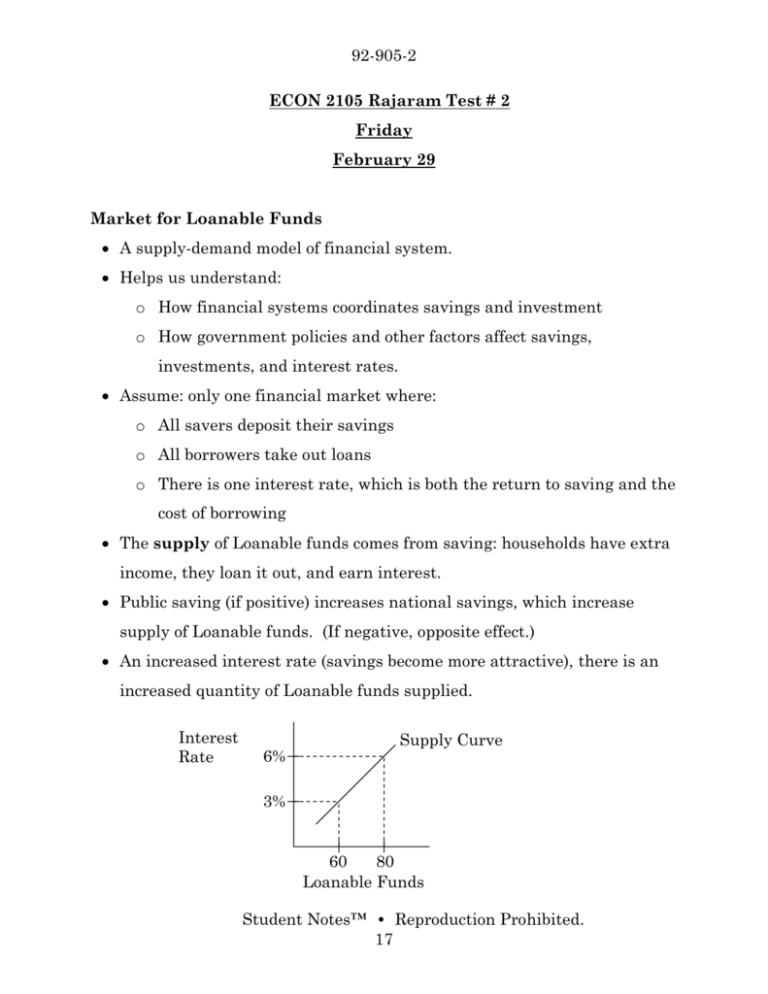
92-905-2 ECON 2105 Rajaram Test # 2 Friday February 29 Market for Loanable Funds A supply-demand model of financial system. Helps us understand: o How financial systems coordinates savings and investment o How government policies and other factors affect savings, investments, and interest rates. Assume: only one financial market where: o All savers deposit their savings o All borrowers take out loans o There is one interest rate, which is both the return to saving and the cost of borrowing The supply of Loanable funds comes from saving: households have extra income, they loan it out, and earn interest. Public saving (if positive) increases national savings, which increase supply of Loanable funds. (If negative, opposite effect.) An increased interest rate (savings become more attractive), there is an increased quantity of Loanable funds supplied. Interest Rate 6% Supply Curve 3% 60 80 Loanable Funds Student Notes™ • Reproduction Prohibited. 17 92-905-2 The demand for Loanable funds comes from investment. o Firms have new equipment and factories. o Households purchase new houses. A decrease in interest rate causes a decrease in the cost of borrowing resulting in an increase in quantity of Loanable funds demanded. Interest 6% Rate 3% 60 80 Loanable Funds Equilibrium: the interest rate adjusts to equate supply and demand. o The equilibrium quantity equals the equilibrium in investment and the equilibrium in savings (in a close economy). Policy 1: Saving Incentives Tax incentives for saving increase the supply of Loanable funds, resulting in a decrease in the equilibrium interest rate and an increase in the equilibrium quantity of Loanable funds. Interest Rate S1 S2 5% 60 70 Loanable Funds Student Notes™ • Reproduction Prohibited. 18 92-905-2 Policy 2: Investment Incentives An investment in tax credit increases the demand for Loanable funds and increases the interest rate. Interest Rate 6% 5% S1 D1 D2 60 70 Loanable Funds Budget Deficits An increase in budget deficit, there is a decrease in investment. The government borrows to finance its deficit, having less funds available for investment; this is called crowding out. Recall investment is important for long-run economic growth. o Budget deficits reduce the economy’s growth rate and future standard of living. Supply curve= savings (supply curve shifts to the left if there is a deficit). Supply of Loanable funds= savings; demand= investment. CHAPTER 15–Unemployment Labor Force Statistics Produced by the Bureau of Labor Statistics (BLS) in the U.S. Department of Labor. Based on regular survey of 60,000 households. Based on “adult population” (16 years and older) Student Notes™ • Reproduction Prohibited. 19 92-905-2 BLS divides population into 3 groups: o Employed: paid employees, self-employed, and unpaid workers in a family business. o Unemployed: people not working who have looked for work during the previous 4 weeks. Just because you don’t have a job- you’re not specifically unemployed. o Not in the labor force: everyone else (not working and not trying either). Labor force: the total number of workers including the employed and unemployed. Unemployment rate (“u-rate”): % of the labor force that in unemployed. o U rate= 100 * (number of unemployed/ labor force) Labor force participation rate: % of the adult population that is in the labor force. o = 100 * (labor force/ adult population) Active learning answers: o U-rate: 100* (7.0/150.1)= 4.7% o Labor Force participation: 100* (150.1/277.5)= 66% o Adult population: 150.1+77.4= 227.5 (labor force + not in labor force) The BLS publishes these statistics for demographic for groups within the population. These data reveal widely different labor market experiences for different groups. Student Notes™ • Reproduction Prohibited. 20
